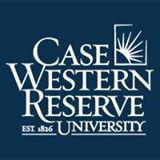预约演示
更新于:2025-03-24
AOP-RANTES
更新于:2025-03-24
概要
基本信息
在研机构- |
最高研发阶段无进展临床前 |
首次获批日期- |
最高研发阶段(中国)- |
特殊审评- |
关联
100 项与 AOP-RANTES 相关的临床结果
登录后查看更多信息
100 项与 AOP-RANTES 相关的转化医学
登录后查看更多信息
100 项与 AOP-RANTES 相关的专利(医药)
登录后查看更多信息
26
项与 AOP-RANTES 相关的文献(医药)2005-10-01·Virology3区 · 医学
A single amino acid change and truncated TM are sufficient for simian immunodeficiency virus to enter cells using CCR5 in a CD4-independent pathway
3区 · 医学
Article
作者: A. Bonavia ; K.M. Gisselman ; J.E. Clements ; B.J. Margulies ; B.T. Bullock
Entry of HIV and SIV into susceptible cells is mediated by CD4 and chemokine receptors, which act as coreceptors. To study cell entry of SIV, we constructed a cell line, xKLuSIV, derived from non-susceptible human K562 cells, that express the firefly luciferase reporter gene under control of a minimal SIV long terminal repeat (LTR). Using these susceptible cells, we studied the entry of a well-characterized molecularly cloned macrophage-tropic SIV. xKLuSIV cells that express rhesus macaque CD4 and/or the rhesus chemokine receptor CCR5 are susceptible to infection with the macrophage-tropic, neurovirulent strain SIV/17E-Fr, but only xKLuSIV cells expressing both CCR5 and CD4 were susceptible to infection by the macrophage-tropic, non-neurovirulent strain SIV/17E-Cl. CCR5-dependent, CD4-independent infection by SIV/17E-Fr was abrogated by pre-incubation of the cells with AOP-RANTES, a ligand for CCR5. In addition to viral entry occurring by a CD4-independent mechanism, neutralization of SIV/17E-Fr with rhesus mAbs from 3 different neutralization groups blocked entry into x KLuSIV cells by both CD4-dependent and -independent mechanisms. Triggering the env glycoprotein of SIV-17 EFr with soluble CD4 had no significant effect in infectivity, but triggering of the same glycoprotein of SIV/17E-Cl allowed it to enter cells in a CD4-independent fashion. Using mutant molecular clones, we studied the determinants for CD4 independence, all of which are confined to the env gene. We report here that truncation of the TM at amino acid 764 and changing a single amino acid (R751G) in the SIV envelope transmembrane protein (TM) conferred the observed CD4-independent phenotype. Our data suggest that the envelope from the neurovirulent SIV/17E-Fr interacts with CCR5 in a CD4-independent manner, and changes in the TM protein of this virus are important components that contribute to neurovirulence in SIV.
2005-07-01·Virology3区 · 医学
Generation and properties of a human immunodeficiency virus type 1 isolate resistant to the small molecule CCR5 inhibitor, SCH-417690 (SCH-D)
3区 · 医学
Article
作者: Enid Rivera-Troche ; Shawn E. Kuhmann ; Serena Xu ; Andre J. Marozsan ; John P. Moore ; Julie Strizki ; Thomas Morgan ; Bahige M. Baroudy ; Carolina Herrera
We describe the generation of two genetically related human immunodeficiency virus type 1 (HIV-1) isolates highly (>20,000-fold) resistant to the small molecule CCR5 inhibitor, SCH-417690 (formerly SCH-D). Both viruses were cross-resistant to other small molecules targeting entry via CCR5, but they were inhibited by some MAbs against the same coreceptor on primary CD4+ T-cells. The resistant isolates remained sensitive to inhibitors of other stages of virus entry, and to replication inhibitors acting post-entry. Neither escape mutant could replicate detectably in peripheral blood mononuclear cells (PBMC) from two donors homozygous for the CCR5-Delta32 allele and both were insensitive to the CXCR4-specific inhibitor, AMD3100. Hence, the SCH-D escape mutants retained the R5 phenotype. One of the resistant isolates was, however, capable of replication in U87.CD4.CXCR4 cells and, after expansion in those cells, was sensitive to AMD3100 in primary CD4+ T-cells. Hence, some X4 variants may be present in this escape mutant swarm. A notable observation was that the SCH-D escape mutants were also cross-resistant to PSC-RANTES and AOP-RANTES, chemokine derivatives that are reported to down-regulate cell surface CCR5 almost completely. However, the extent to which CCR5 is down-regulated was dependent upon the detection MAb. Hence, the escape mutants may be using a CCR5 configuration that is only detected by some anti-CCR5 MAbs. Finally, two SCH-D-resistant clonal viruses revealed no amino acid changes in the gp120 V3 region relative to the parental viruses, in marked contrast to clones resistant to the AD101 small molecule CCR5 inhibitor that possess 4 such sequence changes. Several sequence changes elsewhere in gp120 (V2, C3 and V4) were present in the SCH-D-resistant clones. Their influence on the resistant phenotype remains to be determined.
2004-09-01·Virology3区 · 医学
A novel assay to identify entry inhibitors that block binding of HIV-1 gp120 to CCR5
3区 · 医学
Article
作者: Yuxian He ; Asim Kumar Debnath ; Qian Zhao ; Gabriel Alespeiti
HIV-1 infection is initiated by the interaction of the envelope glycoprotein gp120 with the cellular receptor CD4 that triggers conformational changes in gp120 necessary for subsequent interaction with a coreceptor CCR5 (or CXCR4). The CD4-induced (CD4i) conformation of gp120 can be mimicked by a full-length single chain (FLSC) protein consisting of gp120 linked with the D1D2 domains of CD4 by a 20-amino-acid linker. We have used this protein to establish a flow cytometry-based assay and an ELISA-based assay to identify inhibitors that block the binding of gp120 to CCR5. Both assays are specific for detecting the known CCR5 antagonist TAK-779, but the ELISA-based assay was more sensitive, simple, inexpensive, and rapid; thus, it can be adapted to high throughput screening (HTS). The ELISA-based method was validated with a diverse set of known antagonists, for example, TAK-779, AOP-RANTES, PSC-RANTES, and several mAbs.
100 项与 AOP-RANTES 相关的药物交易
登录后查看更多信息
研发状态
10 条进展最快的记录, 后查看更多信息
登录
| 适应症 | 最高研发状态 | 国家/地区 | 公司 | 日期 |
|---|---|---|---|---|
| HIV感染 | 临床前 | 西班牙 | 1997-04-11 |
登录后查看更多信息
临床结果
临床结果
适应症
分期
评价
查看全部结果
| 研究 | 分期 | 人群特征 | 评价人数 | 分组 | 结果 | 评价 | 发布日期 |
|---|
No Data | |||||||
登录后查看更多信息
转化医学
使用我们的转化医学数据加速您的研究。
登录
或

药物交易
使用我们的药物交易数据加速您的研究。
登录
或

核心专利
使用我们的核心专利数据促进您的研究。
登录
或

临床分析
紧跟全球注册中心的最新临床试验。
登录
或

批准
利用最新的监管批准信息加速您的研究。
登录
或

生物类似药
生物类似药在不同国家/地区的竞争态势。请注意临床1/2期并入临床2期,临床2/3期并入临床3期
登录
或

特殊审评
只需点击几下即可了解关键药物信息。
登录
或

来和芽仔聊天吧
立即开始免费试用!
智慧芽新药情报库是智慧芽专为生命科学人士构建的基于AI的创新药情报平台,助您全方位提升您的研发与决策效率。
立即开始数据试用!
智慧芽新药库数据也通过智慧芽数据服务平台,以API或者数据包形式对外开放,助您更加充分利用智慧芽新药情报信息。
生物序列数据库
生物药研发创新
免费使用
化学结构数据库
小分子化药研发创新
免费使用
